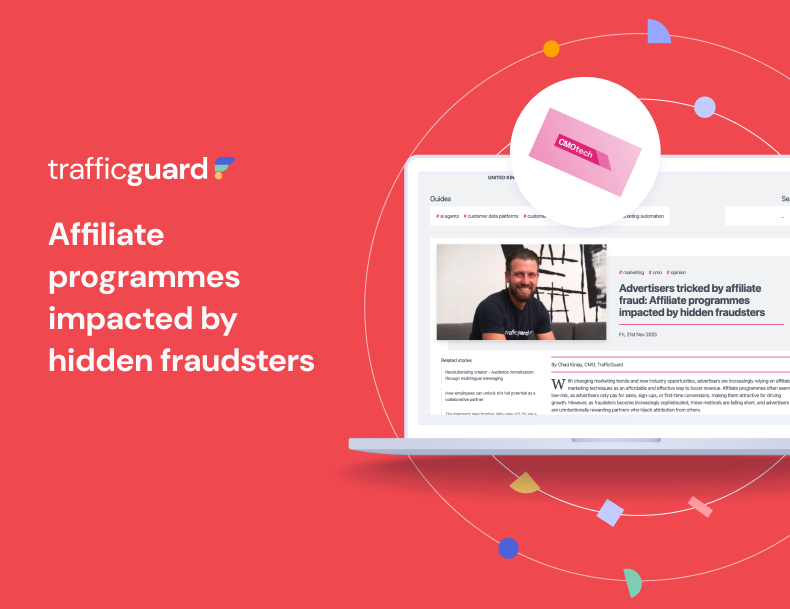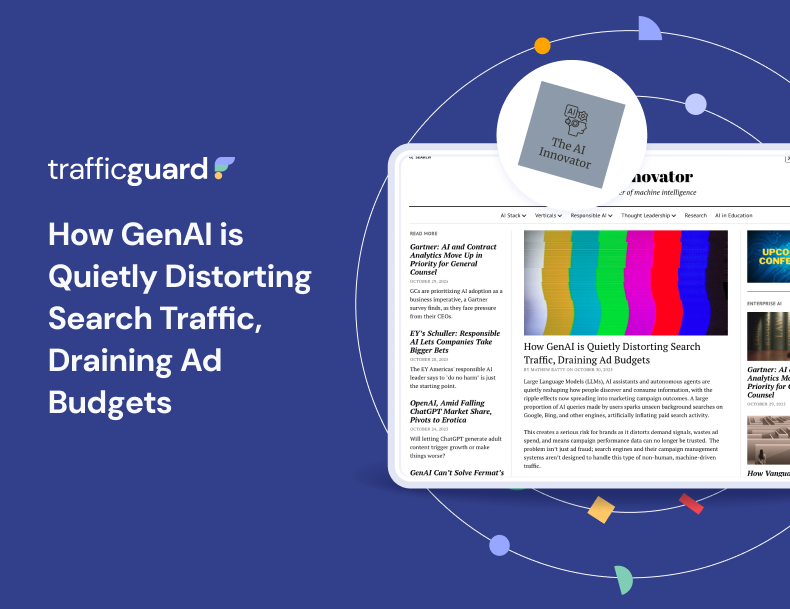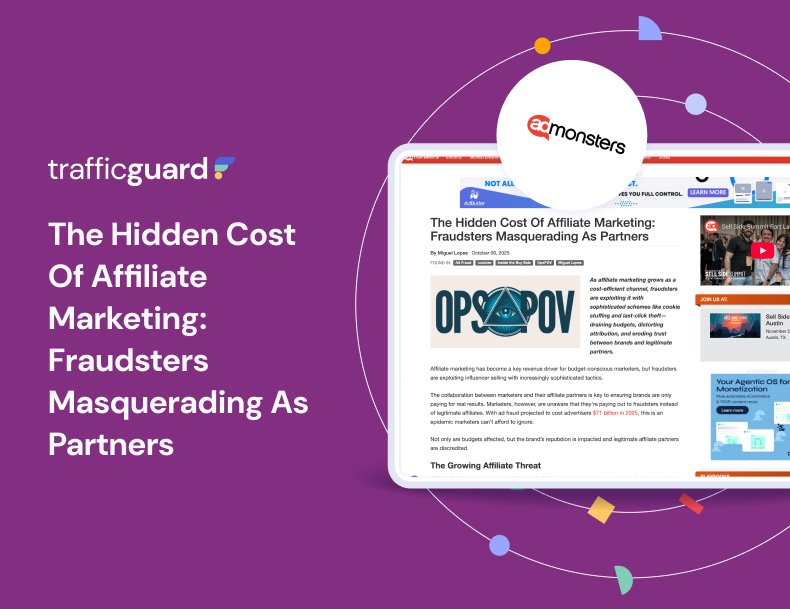Advertisers Tricked by Affiliate Fraud: Affiliate Programmes Impacted by Hidden Fraudsters

With changing marketing trends and new industry opportunities, advertisers are increasingly relying on affiliate marketing techniques as an affordable and effective way to boost revenue. Affiliate programmes often seem low-risk, as advertisers only pay for sales, sign-ups, or first-time conversions, making them attractive for driving growth. However, as fraudsters become increasingly sophisticated, these methods are falling short, and advertisers are unintentionally rewarding partners who hijack attribution from others.
Fraudsters are continuously developing new methods to steal attribution from legitimate partners, leading to advertisers crediting the wrong partner for conversions while underestimating the performance of those actually delivering results. With ad fraud projected to cost advertisers $71 billion in 2025 according to Juniper Research, this isn't an issue that can be left unchecked.
Affiliate fraud is impacting budgets, but the damage goes even further, eroding trust between advertisers and their partners. Disguised as high-performing affiliates, fraudsters can falsify leads to manipulate advertisers and drain their budgets. It's key that advertisers tackle affiliate fraud now to ensure that all partners are credited fairly and rewarded appropriately.
Evolving Fraud Tactics
Affiliate fraud refers to any false or underhanded activity conducted to generate commissions from an affiliate program. Because affiliate programmes are often perceived as low-risk, fraudsters can operate under the radar, evolving their tactics without drawing attention. Their methods have developed from fake purchases to sophisticated attacks that hijack attribution without the advertiser or user realising.
One of the popular tactics of modern affiliate fraudsters is cookie stuffing. To carry this out the bad actor will attach third-party cookies to an unknowing user's web browser. When the user visits the brand's website, the false information in this cookie will trick the brand site into believing the fraudster sent the user there. Advertisers will then mistakenly attribute the engagement to the fraudster, not the actual partner that sent the user their way.
Tactics have also advanced to allow fraudsters to pose as legitimate browser extensions. When a user with this extension installed moves to make a purchase, the bad actor can inject a click right before the purchase is finalised. They will then be wrongly rewarded for the purchase. Another method of last-click fraud like this involves fraudsters hiding data in online discount codes, which when used by a consumer, will generate a background click to secretly steal attribution.
Bad actors also play on common mistakes made by users to fraudulently generate attribution. Users frequently misspell brand names when quickly searching for them, and fraudsters have learnt how to capitalise on this with URL hijacking. By registering a domain name almost identical to the brand they want to impersonate, fraudsters can lead users into their alternate site. These users are then redirected to the legitimate brand website without realising anything went wrong, allowing the fraudster to falsify attribution undetected.
Other Risks
- Incentivised Traffic: Conversions may occur, but these users rarely stick around, leaving advertisers paying for low-value customers.
- Misleading Creative: Ads or landing pages that misrepresent the offer drive non-compliant traffic and damage brand trust.
- Non-Compliant Media Buying: Partners running traffic from restricted geographies or bidding on brand terms risk programme compliance and reputation.
Advertisers are optimising towards bad sources thinking they are driving growth with legitimate partners, when in reality their budgets are being drained by fraudsters. If they don't tackle the growing risk of affiliate fraud, they face long-lasting damage.
Identifying Suspicious Affiliates
To ensure advertisers are rewarding the right partners stop attribution hijacking, it's crucial that they identify bad actors before they have the chance to impact branded campaigns.
To achieve this, there are multiple methods they can deploy to expose fraudulent activity:
- Regularly Monitor Traffic: Regular traffic and metric audits will give advertisers the chance to closely analyse their data for any discrepancies or suspicious activity. They can then identify fraud before it has the chance to significantly damage their budgets.
- Track Signs of Fraud: Fraudsters can't fully cover their tracks, they leave signs that can give advertisers a head's up that fraud is taking place. An example would be an affiliate being paid a suspiciously high commission despite not having the proper evidence of their contribution. Another sign would be a sudden spike in traffic at suspicious times of the day, or from questionable sources.
- Extensive Partner Vetting: Thoroughly vetting potential affiliate partners is also key to ensure advertisers aren't paying and optimising towards bad actors. Basic steps to verify their identity can't be overlooked, such as checking their email address matches their website's URL. Their platforms should also be reviewed before an agreement is reached to determine if they're a legitimate candidate.
Implement Ad Fraud Protection: Consider using ad fraud monitoring tools that track clicks, conversions, and referral sources in real time to flag suspicious activity and protect your spend.
Securing Budgets and Driving Growth
Affiliate marketing remains a low-risk, high-reward strategy for engaging new users. But without monitoring, attribution hijacking, and other fraudulent activity can quietly erode budgets and distort performance metrics. By vetting partners, monitoring traffic, and implementing fraud protection, advertisers can ensure their spend rewards the partners who genuinely deliver value, safeguarding both budgets and programme integrity.
Read the full article at CFOtech UK
Get started - it's free
You can set up a TrafficGuard account in minutes, so we’ll be protecting your campaigns before you can say ‘sky-high ROI’.
Chadwick Kinlay heads up Traffiguard’s global marketing function out of Australia, bringing with him over 20 years of commercial, branding, communications and business development experience.
Subscribe
Subscribe now to get all the latest news and insights on digital advertising, machine learning and ad fraud.




.webp)


